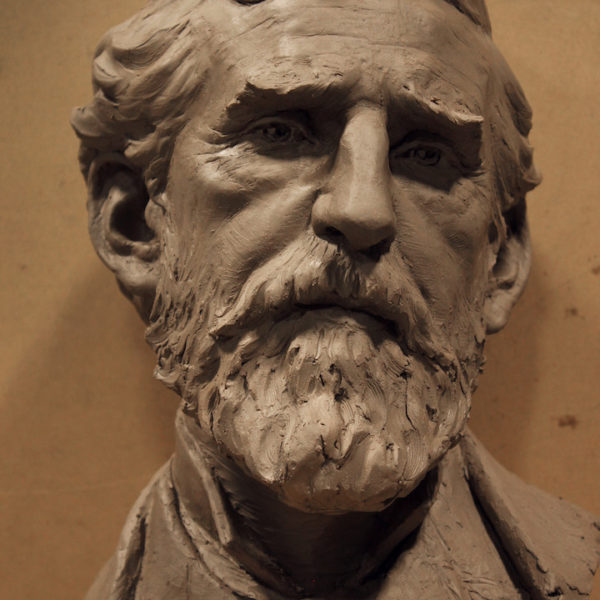Expressive Portraits in Clay

Heather Personett
July 29 – August 2, 2024 (Monday – Friday, 10am – 5pm)
Schedule: 10am – 1pm workshop; 1-2pm lunch; 2 – 5pm workshop
Limit: 8 students
Tuition: $950 ($475 deposit upon enrollment) Clay is provided.
Tuition balance is due by June 1, 2024.
Course Description
Description:
In this week-long workshop, students will learn the necessary skills for how to successfully sculpt a portrait from life, with special consideration for naturalism, expression, and artistic composition.
Working directly from the model, this course’s approach is based on close observation from life with added emphasis on anatomical structure and form relationships. Studying form relationships in the portrait will give students the ability to think three-dimensionally, to judge likeness through proportion and anatomy, as well as learn to use volume, depth, and mass to describe their subject.
The class will begin with teaching how to utilize an armature, take and record measurements and learn clay management. It will then cover a sculptural “block-in” technique, investigating how to accurately establish the large relationships of the portrait, before moving onto modeling and finishing techniques for clay. During the workshop, discussion will include the exploration of different expressive components of classical portraiture, such as gesture, hair, eye direction and facial expression.
By the end of the course, students will have completed a life-size clay portrait from observation and learned how to effectively organize a strategy for improving their sense of volume, likeness, anatomical realism, and composition.
This class will include sculpting demonstrations, constructive critiques and lecture.
No experience necessary. Teaching will be tailored to individuals.
Clay and armatures will be provided. For all other items, please refer to the materials list.
Course Outline:
Day 1: Sculpture Orientation
- Materials overview (armature, stands, tools)
- Clay management
- Basics of working observationally (perspective, movement, working globally, working general-to-specific, symmetry)
Block-In Basics
- How to arrange your armature
- Building symmetrically with a centerline
- Clay handling
Setting scale/proportions with measurements
- What/how to measure from the model
- How to record measurements
Finishing with block-in at scale with basic skull shape
Day 2: Expanding the Block-In
- Begin to refine skull shape with consideration to planar structure
- Taking more specific measurements (tragal triangulation)
- Identifying important anatomical landmarks
- Block in of the neck, nose and ears
Day 3: Achieving Likeness through Structure, Proportions and Depth
- Developing the eye sockets, brow, and cheekbones
- Placement of the features, such as eyes and mouth
- Continued refinement of the skull shape
- Blocking in the hair and other individual elements
Day 4: Form and Features as Volume
- Considering the abstract volumes of the features
- How the elements of a portrait function together
- How to use the rake tool to unify volume and explore form resolution
- Utilizing hair, clothing, expression, and gesture of the model as emotive or narrative descriptors
Day 5: Final Resolution
- Final form modeling and compositional arrangement
- Group review of all work
